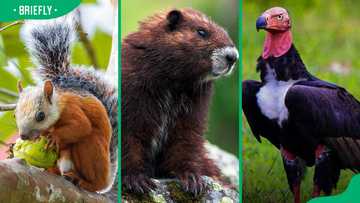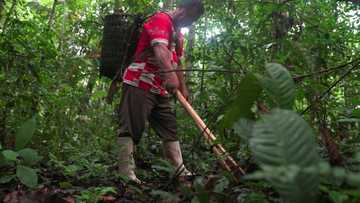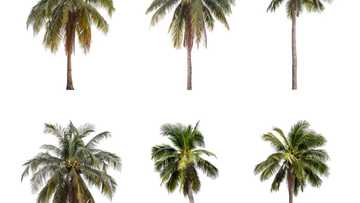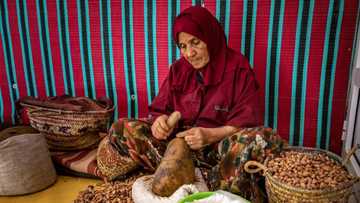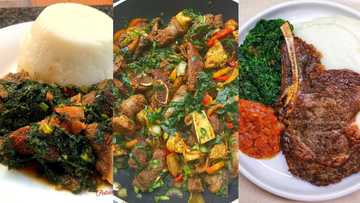Top trees in South Africa: A-Z exhaustive list with images
South Africa is a biodiverse country known for its wide variety of indigenous plants and animals. Trees in South Africa contribute to its beautiful landscape and favourable climate. They are also used to treat different ailments, provide food, clean the air, and make furniture, among other uses.
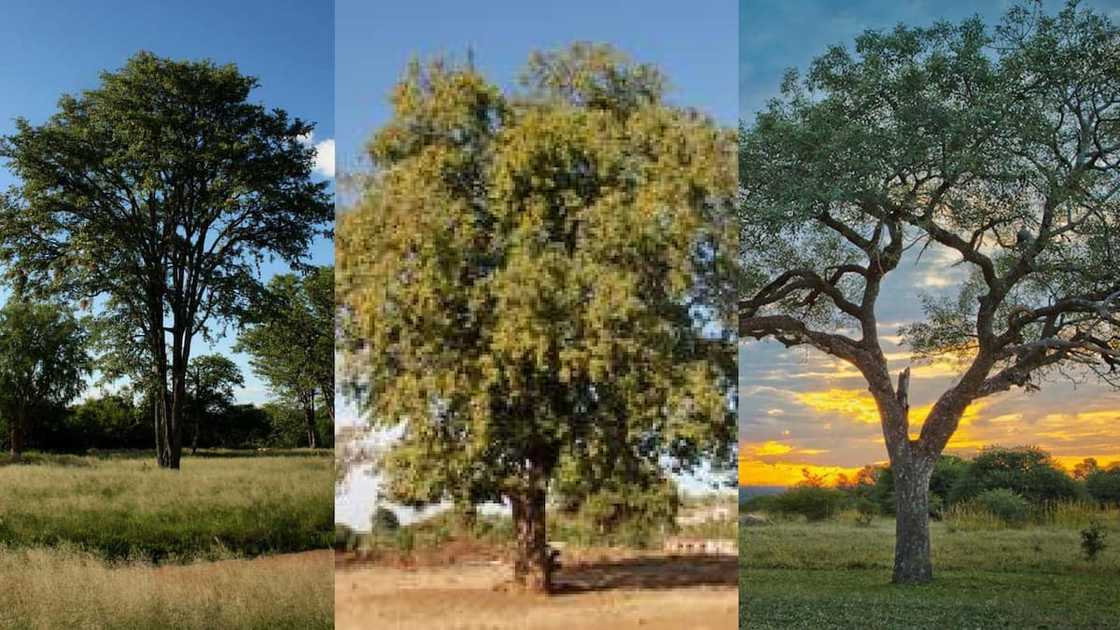
Source: UGC
South Africa does not have extensive forest land. The distribution is not even, and only 7% of the country's area is covered. The majority of natural forests and actual woodlands are in protected areas.
List of indigenous trees found in South Africa
Indigenous trees usually evolve through natural processes and are unique to a country's ecosystem. Below are the different types of natural trees in South Africa;
Baobab tree
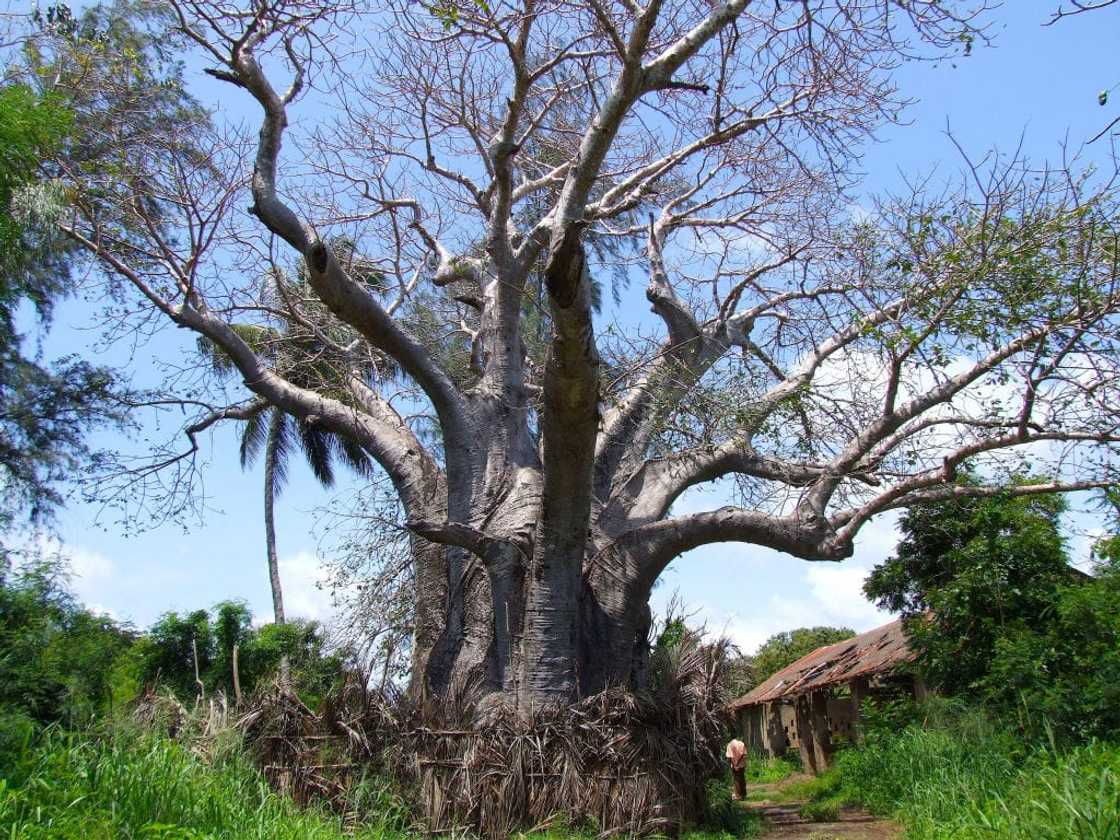
Source: Getty Images
Adansonia digitata, also known as the baobab, is an indigenous tree in South Africa that grows in Limpopo close to the Zoutpansberg mountain range. Its bark can be used to make musical instruments, rope, and clothing. The young leaves of the baobab tree are edible and have medicinal value.
This SA tree can reach a height of 20 meters and has a highly distinctive appearance. As per scientific dating methods, they can survive up to 3,000 years. Its fruit, which can reach a maximum length of 30 cm (1 foot), is loaded with vitamin C and tartaric acid.
Black Monkey Orange
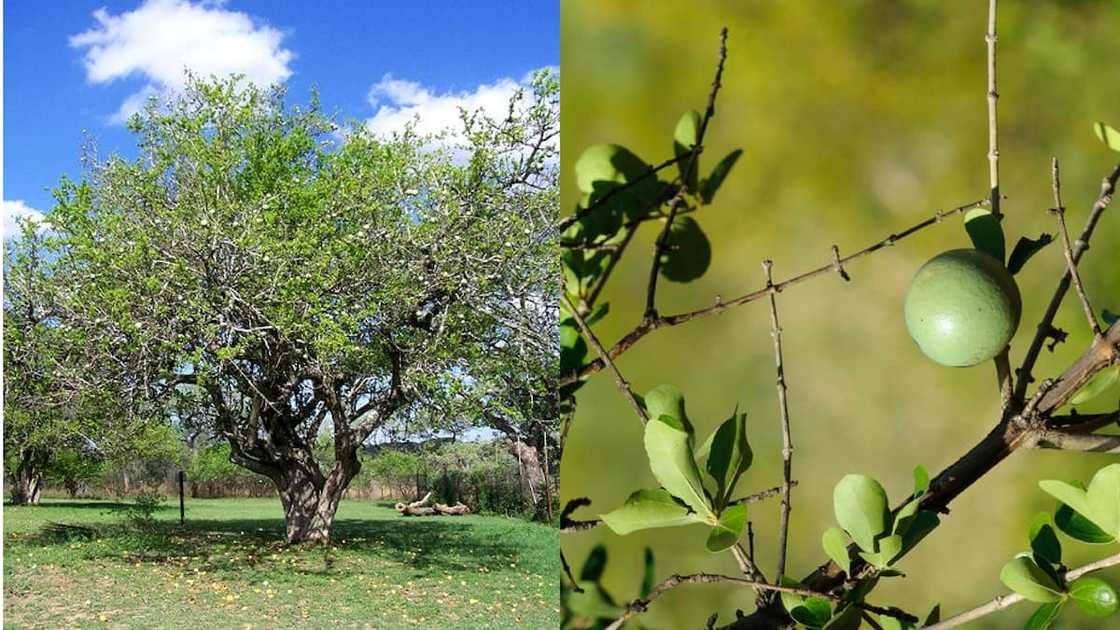
Source: UGC
Black Monkey Orange, also known as Stychnos Madagascariensis, is a wild fruit that grows in the Eastern Cape, KwaZulu-Natal, and Limpopo. It is a tiny, spiky, deciduous shrub that is evergreen and has a height range of 2 to 6 meters. It typically thrives in rocky and open woodlands. The fruits should be consumed when ripe.
Buffalo thorn
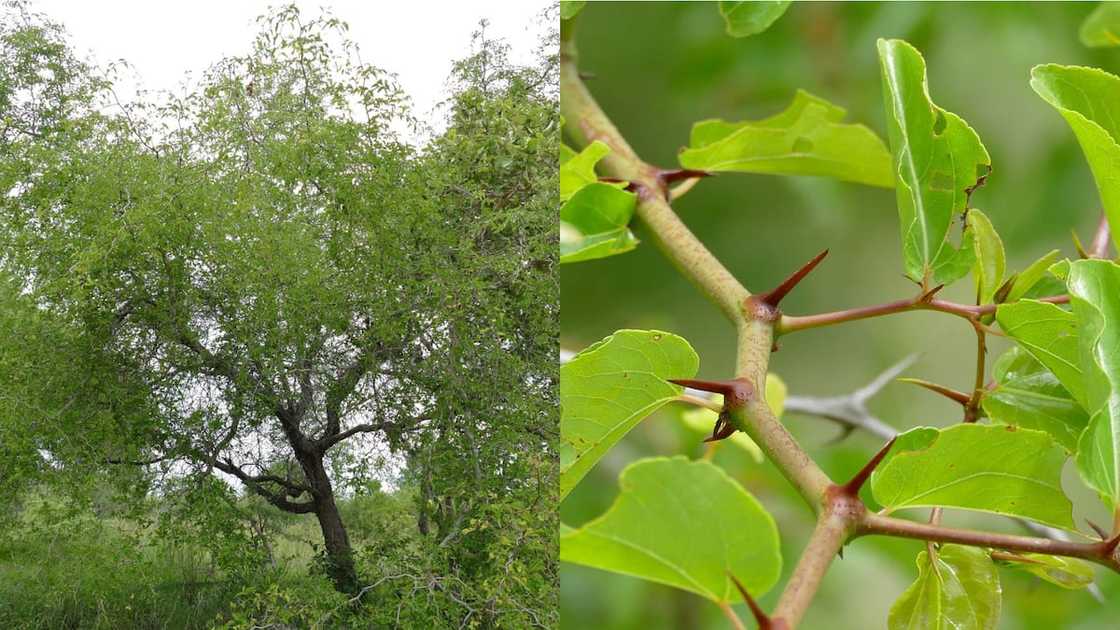
Source: UGC
Ziziphus mucronate, also known as Buffalo thorn, is an SA tree species belonging to the Rhamnaceae family. It is native to South Africa's Western Cape, according to the South African tree identification methods. The deciduous plant can reach a height of 17 meters and grows mainly in open woodlands and along riverbanks.
The bark and leaves are used to treat skin infections, pain, and respiratory problems. The leaves are edible and can be cooked into spinach or can be roasted and ground for use as a coffee substitute. Rushed leaves are used to stop bleeding.
Bushwillow tree
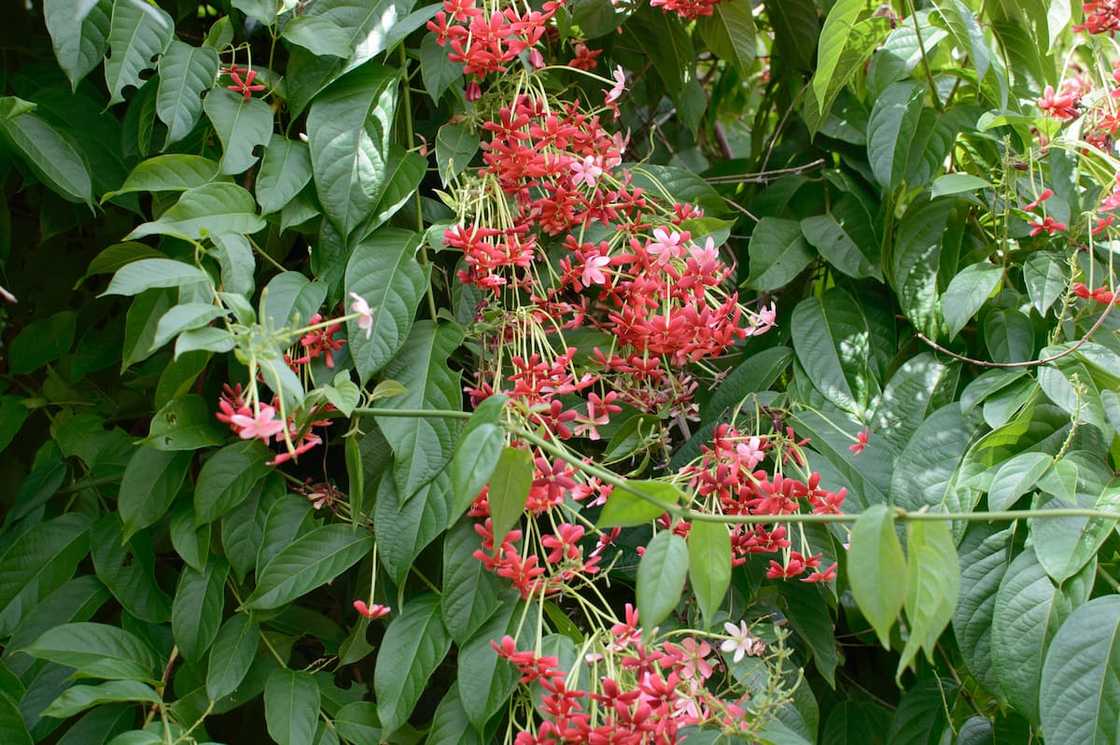
Source: Getty Images
Combretum Zeyheri, also known as bushwillow, is a medium to a large spreading tree found primarily along riverbanks in South Africa. It also grows in woodlands and savannahs. It is often planted as a shed tree. A bushwillow's roots and fruits are poisonous and should not be eaten. The roots, which are about the thickness of a finger, are used to make toys such as bows for children.
Common star chestnut
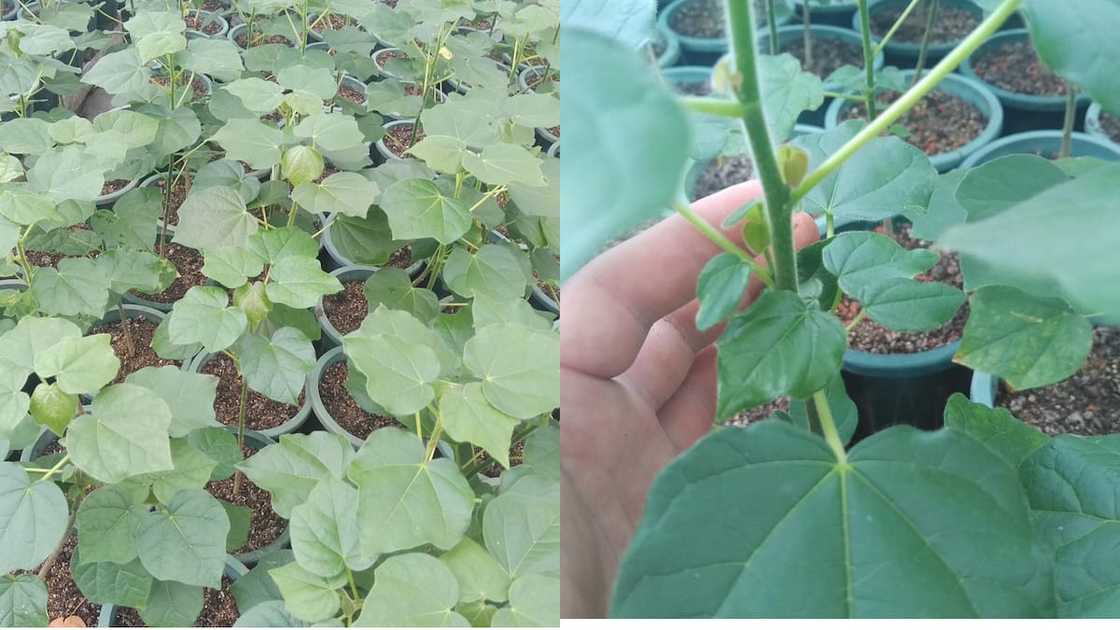
Source: UGC
The common star chestnut, scientifically known as Sterculia Rogersii, is an indigenous evergreen tree that can reach a height of 8 meters. The bark has a papery texture that peels away to reveal a lighter red or yellowish undertone. In Arab countries, the resin was traditionally used as a washing agent. The fibrous under the bark is harvested for use as twine in weaving fishing nets or sewing sleeping mats.
Corkbush plant
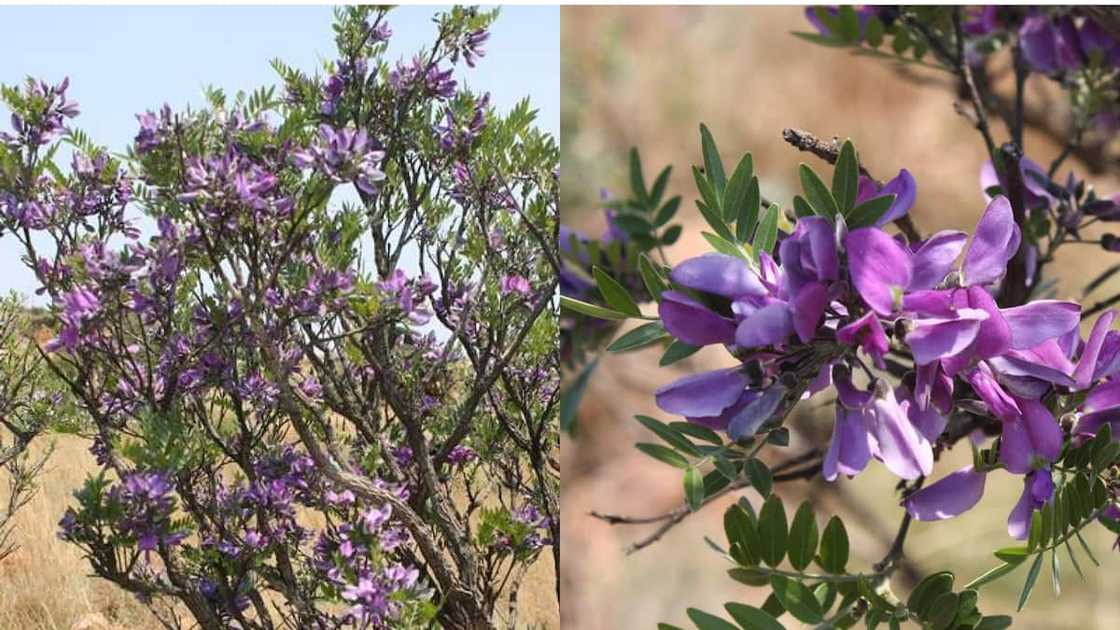
Source: UGC
Mundulea Sericea, or familiar star Corkbush, is among the many attractive trees of South Africa. It has pale grey leaves covered in fine silver hairs, giving the plant a gleaming appearance. Bleaching agents are derived from its roots, bark, and leaves, while the bark is used to treat poisoning as an emetic.
Jackalberry
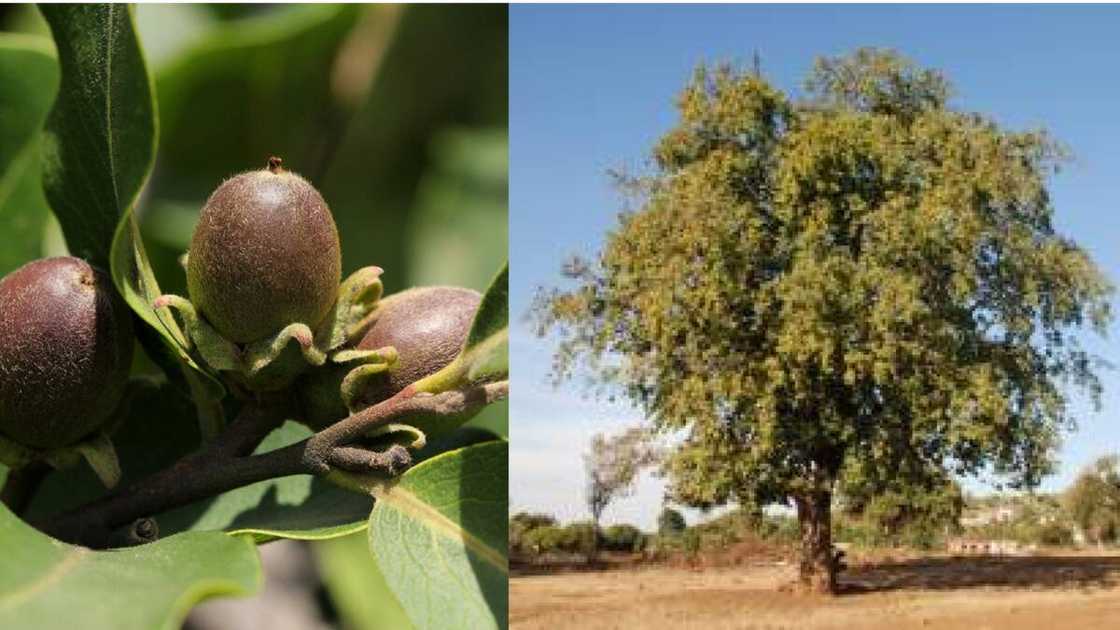
Source: UGC
The Jackalberry can reach heights of up to 25 meters, and the circumference of its trunk is approximately four meters. Their trunks are often used to make canoes. Its hardwood has a fine grain, making it suitable for flooring and designing high-end furniture.
The tannin in the leaves, bark, and roots acts as an astringent and is thus used to stop bleeding. Jackalberries are mainly found in the South African province of Limpopo.
Lala palm tree
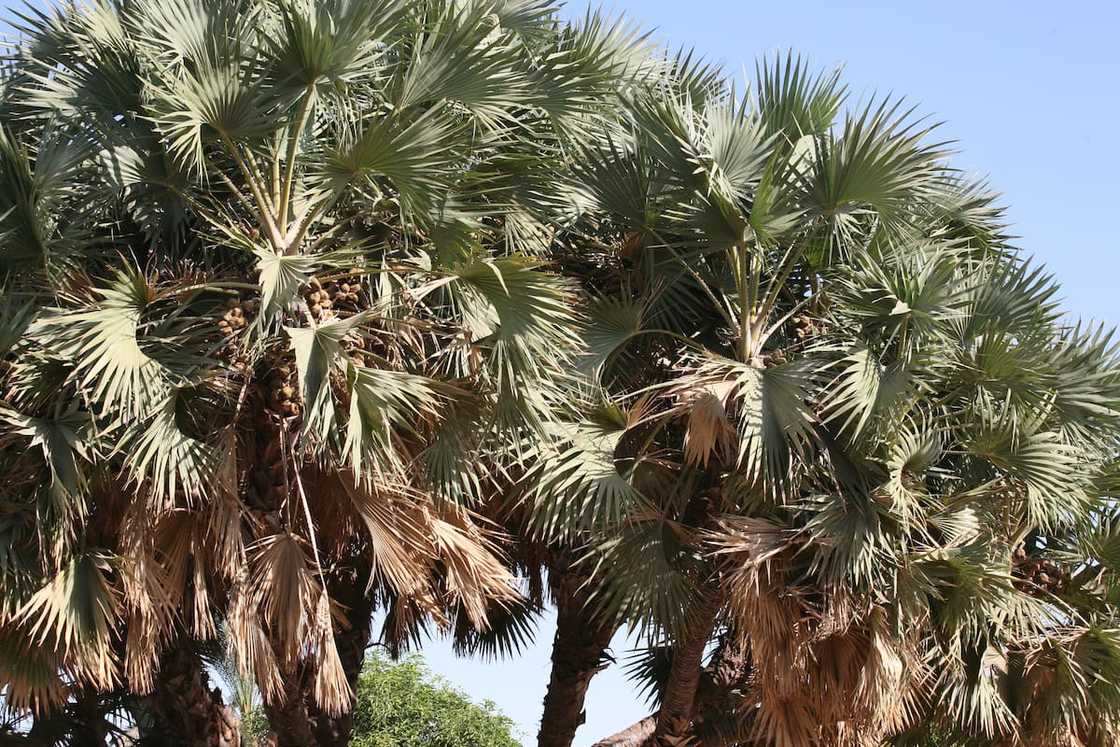
Source: Getty Images
The Lala palm, scientifically known as Hyphaene Coriacea, is an exceptionally tall tree that can grow to 15 meters tall. The fruits have an irregular pear shape and range from 60 to 80 mm in diameter. The fruits are edible and have a milk substance that tastes and looks like coconut milk. The Lala palm tree can be found in South Africa's Limpopo, Namibia, Botswana, Zimbabwe, and Angola.
Marula tree
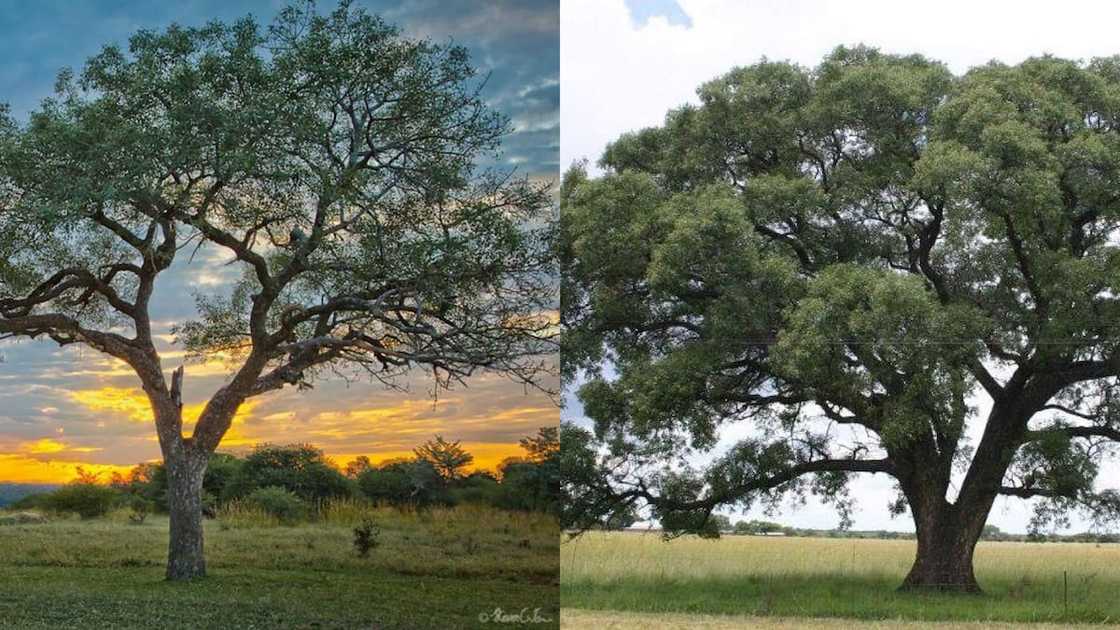
Source: UGC
The marula tree, scientifically known as Scelerocarya Birrea, is primarily found in Mpumalanga's Lowveld and South Africa's Kruger National Park. The tree's wood is soft and used for carving. The bark can be used to make rope and light brown dye. The bark also contains antihistamines, which are used to cleanse the body by steeping it in boiling water and inhaling the steam.
Mopane tree
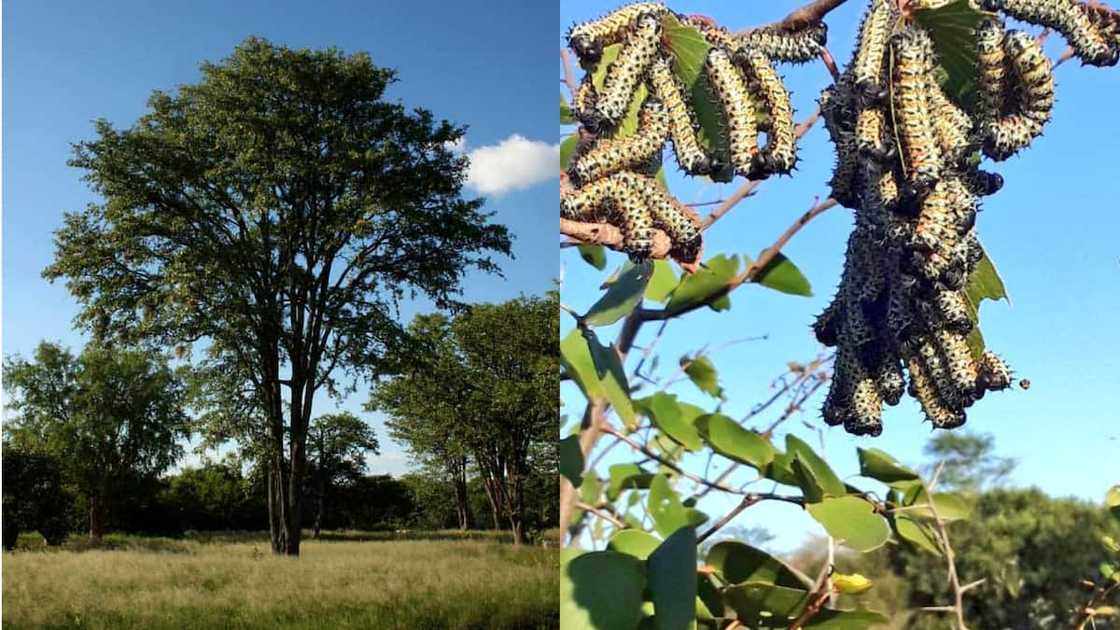
Source: UGC
The Colophospermum Mopane, commonly known as the Mopane tree, is a multi-stemmed plant known for its kaleidoscopic appearance and butterfly-shaped leaves. It has small, barely noticeable flowers that are yellowish-green in colour. The tree forms small hanging clusters near the twig tips.
The fruit of the mopane is a green, flat, and rough pod shaped like a kidney. The mopane moth, Gonimbrasia Belina, inhabiting the tree can be eaten fresh or dried. Its wood is used to make furniture and fences due to its colour, durability, and termite resistance abilities.
Natal mahogany
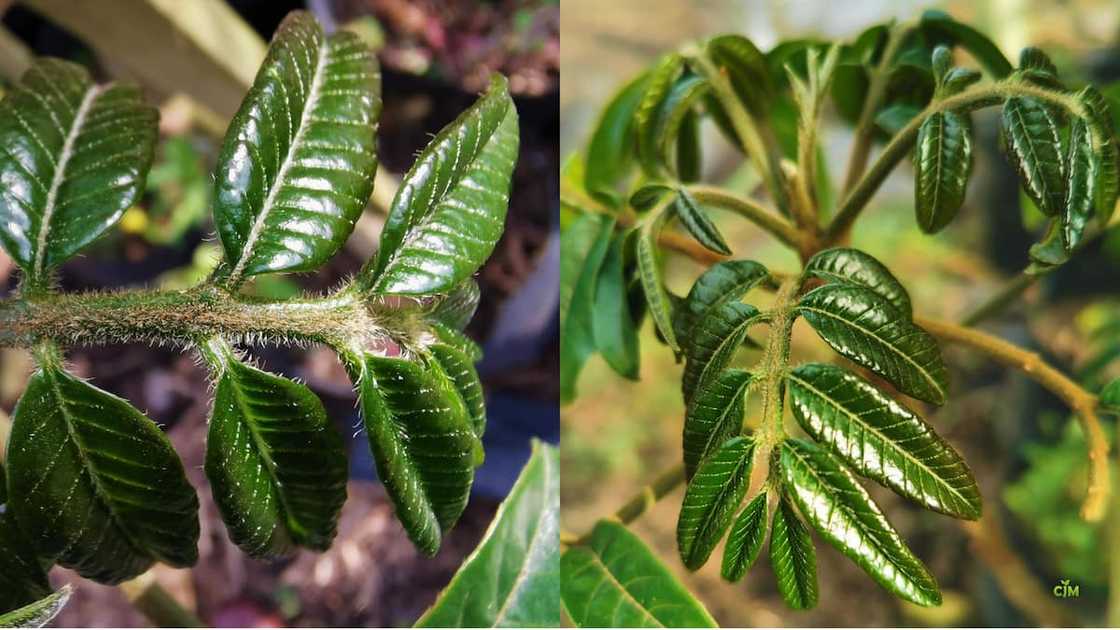
Source: UGC
Natal mahogany grows in South Africa's KwaZulu-Natal and Limpopo provinces. It is an evergreen tree that can grow up to 20 meters tall. It has a broad, spreading crown that casts dense shade beneath. It also has sweetly scented flowers that grow in thick bunches and are creamy green in colour.
Locals soak the seeds in water to make a milky substance, often served with spinach. The bark is used as an enema and to make pink dye. The wood of the Natal mahogany is used to make musical instruments, household implements, bats, furniture, and canoes.
Olinia Ventosa
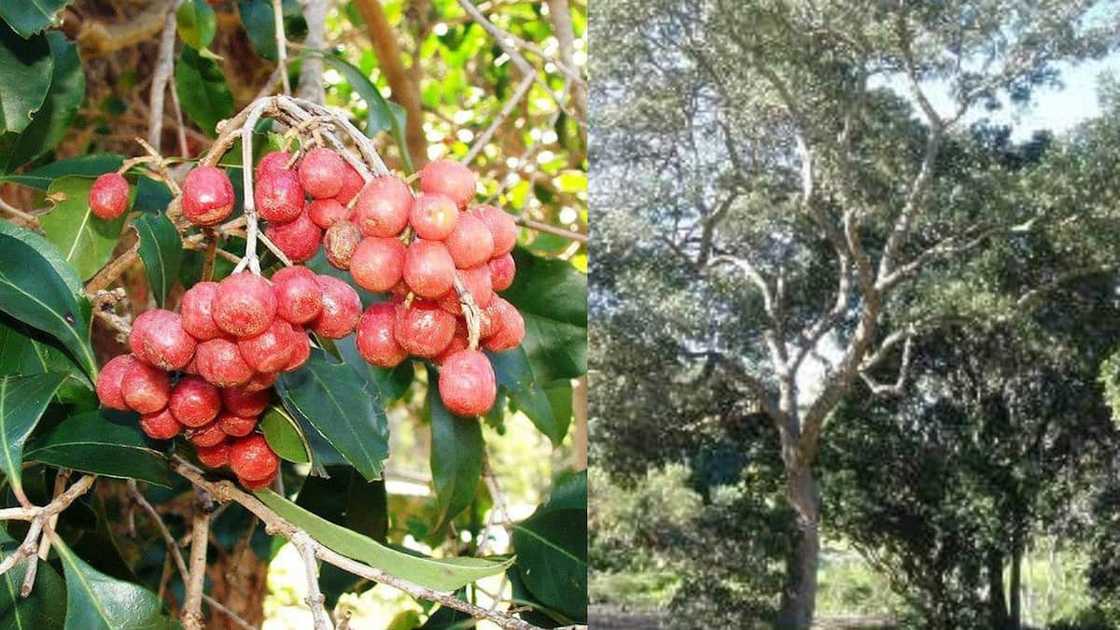
Source: UGC
Olinia Ventosa, commonly known as a hard-pear plant, is a large and evergreen forest tree. The indigenous Mzansi plant usually grows up to 20 metres tall. It often forms a smaller tree or shrub when exposed to harsh weather conditions. Olinia Ventosa grows in the southern and eastern coastal regions of South Africa.
Sausage tree
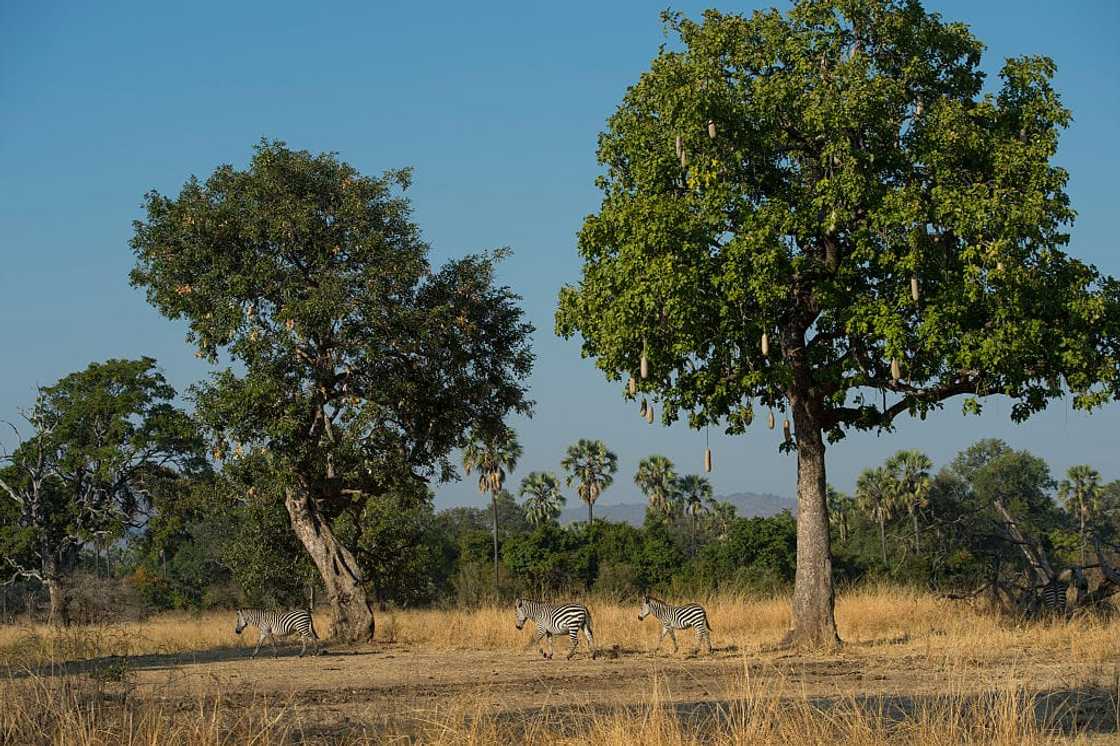
Source: Getty Images
The Kigelia Pinnata pods, which produce a red dye when boiled, are often used as religious amulets and talismans. The fruit's rind is used to aid the fermentation process of local brews. The fruit is also used to create an ointment that is used to treat skin conditions.
The sausage part of the tree is not edible, but when pulped, its skin is used as external medicine, particularly for skin conditions such as skin cancer. These ointments are made by burning the skin of the sausage, grinding it with water and oil to make a paste, and then applying it.
Silver cluster-leaf
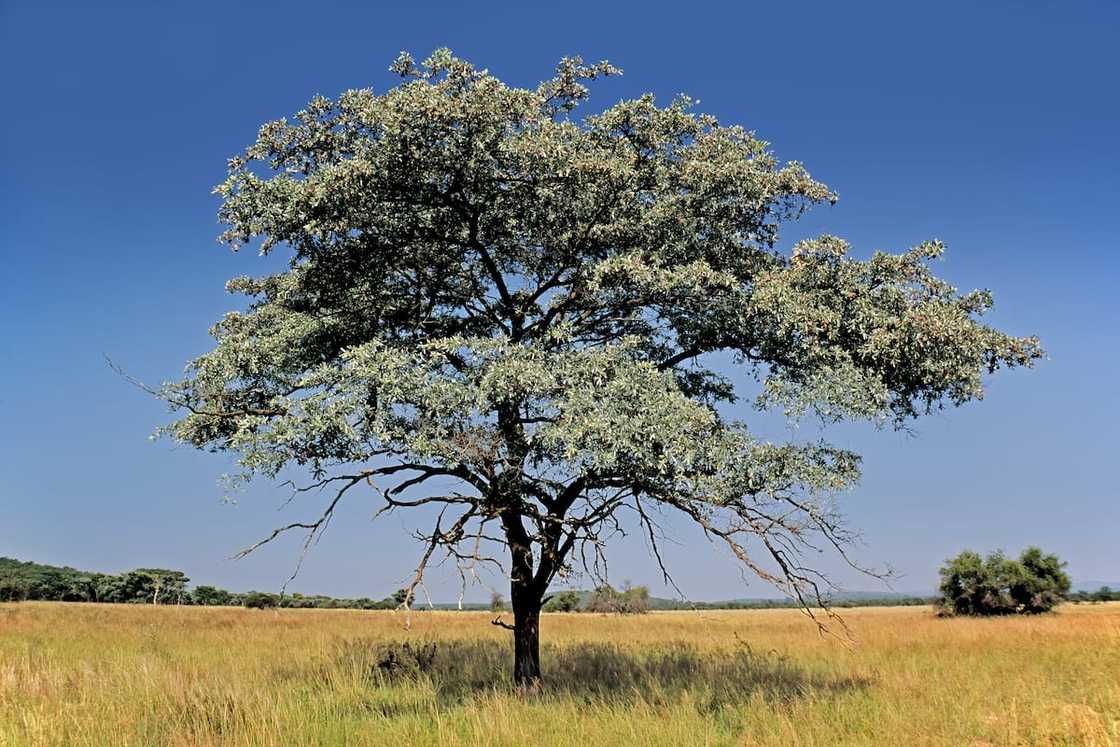
Source: Getty Images
The silver cluster-leaf tree has long, lance-shaped leaves clustered at the branches' ends. Fine silvery hairs cover the surface of the leaves, giving them a shiny appearance. As the tree gets older, its bark develops cracks. The extracts from the bark are used in tanning leather and treating wounds, poisonings, and diabetes.
The root treats stomach problems, pneumonia, and eye problems. The silver cluster-leaf wood is suitable for furniture, fencing, construction, and making axe handles. The wood also burns well as fuel.
Tamboti tree
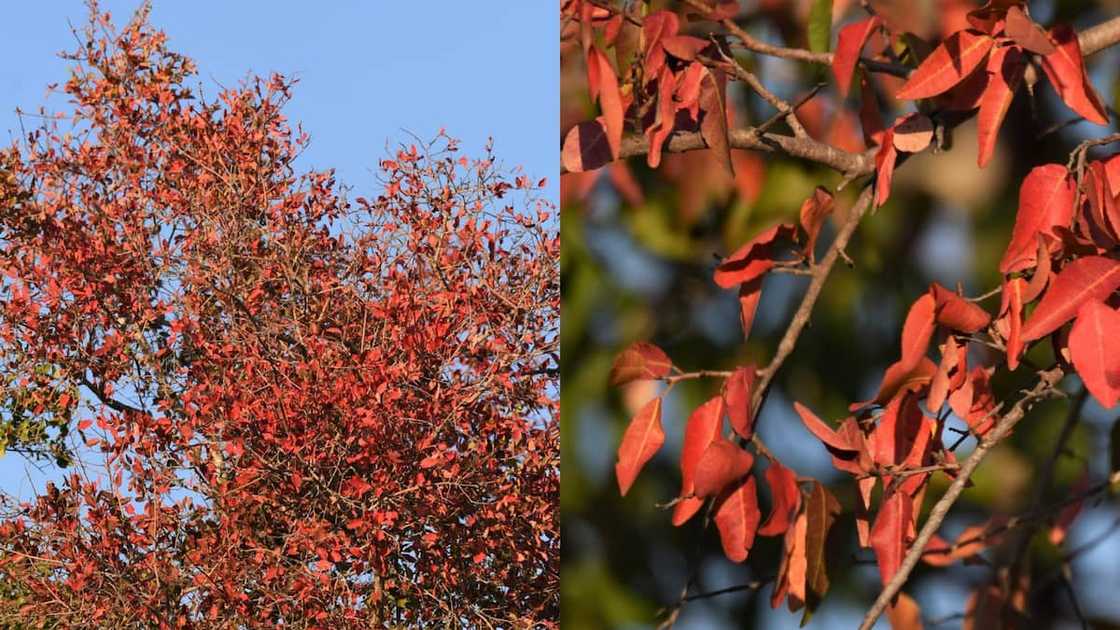
Source: UGC
The Tamboti grows to a medium height and has a distinctively dark and rough bark. It is a deciduous tree with multi-coloured spots, distinct growth increments, and poisonous latex. Its wood is used for carving and making luxury furniture and trinkets. The tree is mainly found in the Lowveld of South Africa and Swaziland.
Umbrella thorn tree
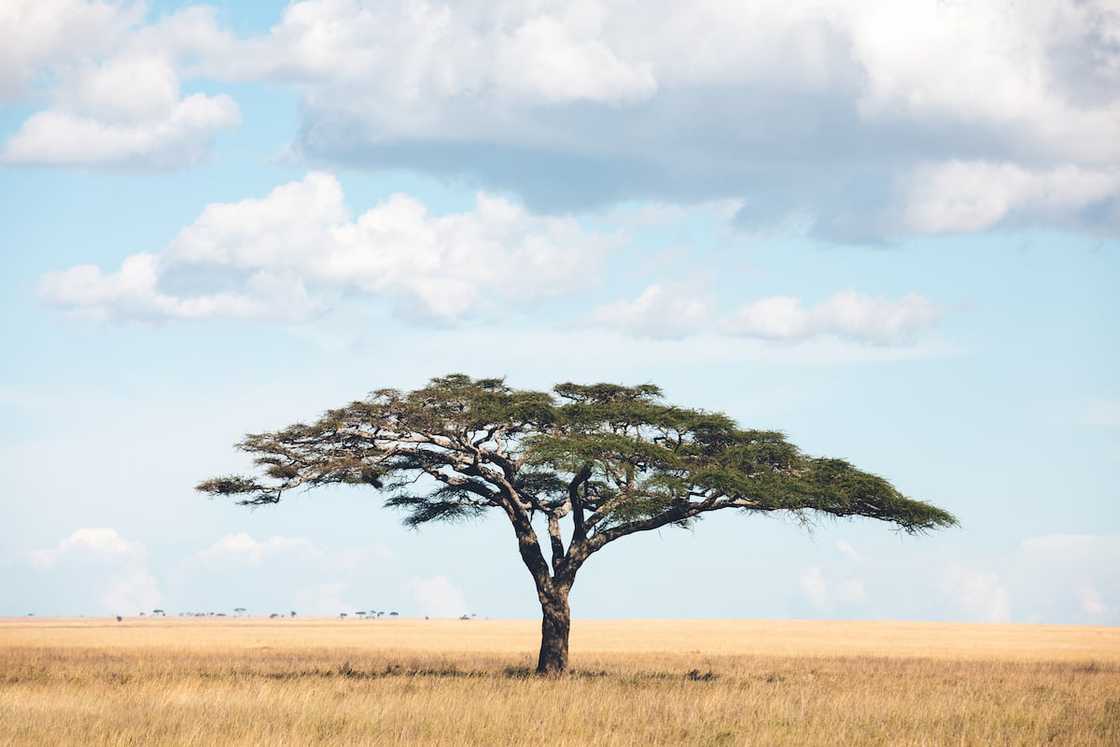
Source: Getty Images
The umbrella tree, also called Acacia tortilis, is found in the arid regions of the Free State Limpopo, North West, Gauteng, Mpumalanga, KwaZulu-Natal, and Northern Cape. It is drought resistant and can survive with annual rainfall ranging from 40 mm to 1200 mm and dry seasons lasting one month to a year.
The plant's wood makes wagon wheels, furniture, firewood, and fence posts. Its branches are used to construct temporary pens and cages. Wild and domestic animals and humans occasionally consume the pods. The tree's gum is edible and can be chewed as a substitute for processed chewing gum
Weeping Boer Bean
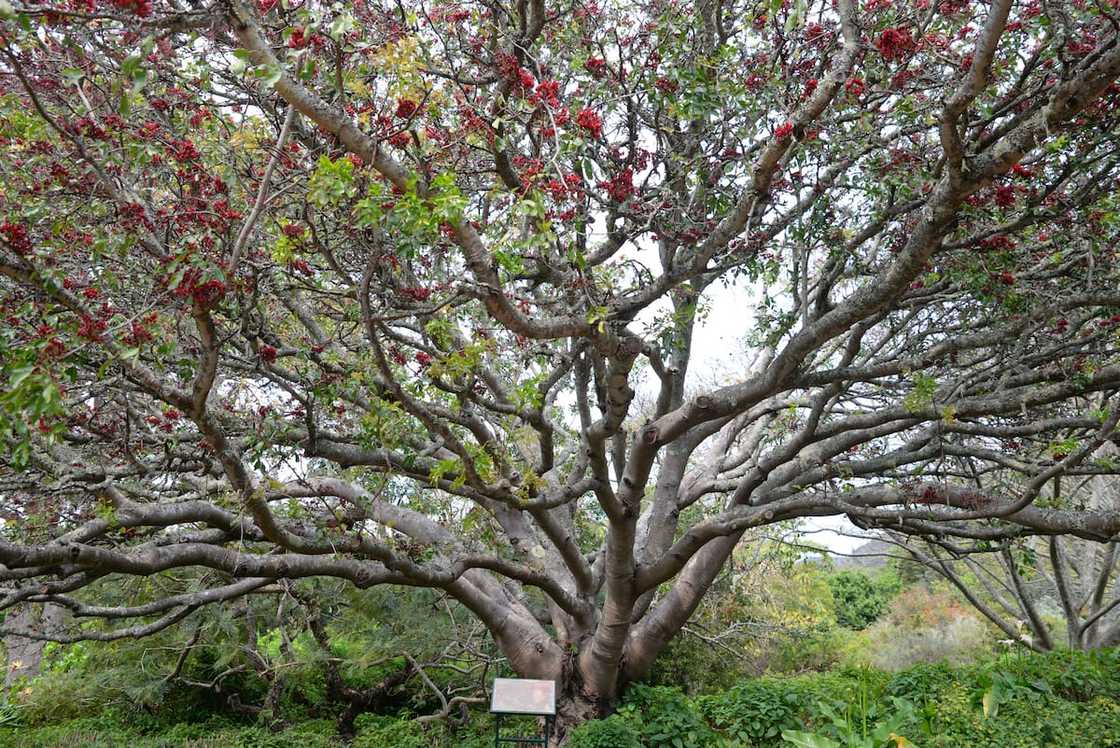
Source: Getty Images
The Weeping Boer Bean, also known as Huilboerboon, or African walnut, can reach a height of 22 meters. It bears fruit in the shape of a pod, which is hard, flat, dark brown, and woody. Its root and bark are combined to treat nervous heart conditions, stomach problems, and blood purification. Roasted weeping Boe Bean seeds have a high carbohydrate content and are low in fat and protein.
What is the most famous tree in South Africa?
The Baobab plant is one of South Africa's and the continent's most recognizable trees. This unusual plant provides vitamin C to those who consume its fruit. It is also known as the tree of life because its trunk can hold up to 4,500 litres of water.
What are the big trees in South Africa?
The Baobab tree rarely grows taller than 20 meters but usually has a massive trunk and huge branches. The largest baobab in South Africa (the Sagole Baobab in Limpopo) is only 22 meters tall, but its trunk is 10.47 meters in diameter and 32.89 meters in circumference.
What trees grow the fastest in South Africa?
Olinia Ventosa is one of the quickest-growing indigenous trees and a forest pioneer. It can reach a height of 25 meters. It is mainly found in the Western and Eastern Cape of South Africa. Other fast-growing trees include Buffalo thorn, Jackalberry, Marula, and Natal mahogany.
What is South Africa's national tree?
South Africa's national tree is the real yellowwood, scientifically known as Podocarpus Latifolius. It may reach a height of 40 meters and have a trunk diameter of 3 meters. Yellowwood has been prevalent in South Africa for about 100 million years. The species is spread across various parts of the country.
Indigenous trees of South Africa contribute to the country's aesthetics, economy, and favourable climate. They must be preserved and more trees planted to curb the looming global climate crisis and to sustain human and animal lives.
READ ALSO: List of indigenous medicinal plants of South Africa
Briefly.co.za highlighted a list of indigenous herbal plants found in South Africa. The country has over 22,755 plant species, and more than 3000 of these species are used to treat different kinds of ailments.
Medicinal plants like African ginger oil, Aloe Ferox, bush tea and others were used by traditional healers. They are still in use today.
Source: Briefly News

